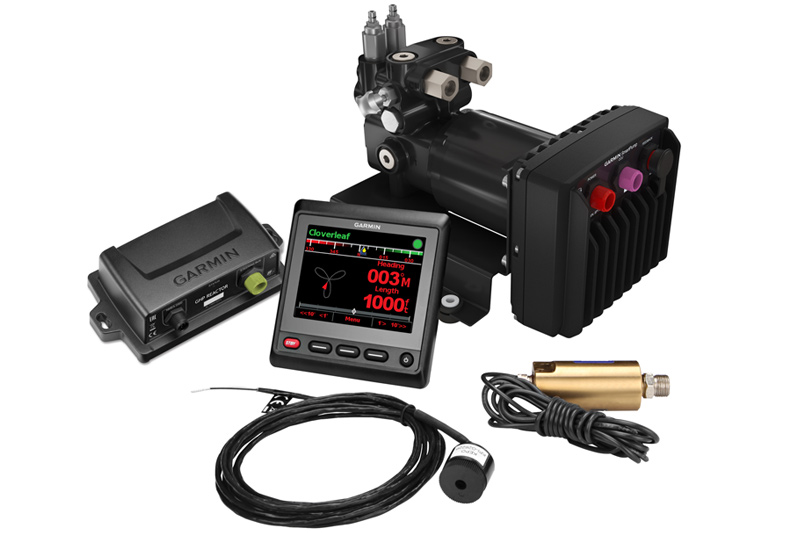Once considered just nice to have, autopilots are now readily available for after-market installation on most boats. As with most marine electronics, the price has come down, and the level of sophistication and value to everyday boaters has gone way up.
The two most significant improvements are the rate motion sensors and the ease of calibration. Older autopilots used a fluxgate compass heading. But new units have a rate motion sensor that understands pitch, yawl, and the rate of turn, making travel in confused seas less stressful on the autopilot.
The new autopilots are also much easier to calibrate and even have the ability to learn and tune themselves for your particular boat and auto-learn numerous sea states. Some models, like the Garmin with Shadow Drive, allow you to grab the wheel to disengage the autopilot, then it re-engages when you let the wheel go.
Other advantages are the inter-operability between navigation systems and the advances in reducing the power consumption of these units. Autopilots are now available in several different sizes based on your type of boat, displacement, and steering system.
What are the main advantages of installing an autopilot? Number one is when you steer true to a set course; you save time and fuel. With all the strong currents in the Pacific Northwest, we rarely go where the boat is pointed. In other words, the heading of the boat and the course over ground aren’t always the same.
You can also leave the helm to trim sails, adjust lines, take a break from holding the helm steady, watch for logs or make a radio call, especially if you are single-handing. If there is an emergency on board, an autopilot serves as an extra crew member.
For off-shore sailors, helm fatigue can lead to poor judgment and slow reactions. If you travel at night or in severe low-light conditions, it can be challenging to steer to a point on land or magnetic compass at the helm, an autopilot can keep your boat on a specific course without straying.

There are three different types of autopilots: Windvane, Above Deck, and Below Deck. Windvane (or self-steering), is an older type that transfers wind energy from a vertical air paddle to a trim tab or a water paddle attached to the rudder. Above Deck and Below Deck are newer and more common autopilots. Above Deck is more common on smaller boats under 35 feet and is inexpensive, easy to operate, and energy efficient. This type connects either to the tiller or directly to the steering wheel and is powered by a small motor. Below Deck is best suited for boats over 30 feet that have a larger displacement. This system includes a course computer (or central processing unit) with a smart heading compass, a drive unit which can be a hydraulic pump, a linear drive or rotary, and a control head used to interface with the autopilot system.
There are several different operating modes that vary between the autopilot models. Generally, the default is set to compass mode. This mode will steer the compass course shown on the control head and will stay on the same course over time. Navigation mode allows the user to chart a course and move to a waypoint (or route), which is a collection of waypoints. As each waypoint is reached, a new notification prompts the user to the next. The wind or wind vane mode allows a user’s chartplotter to recognize the wind and steer to it in the same way one would steer manually. This mode is typically used for open water or long ocean trips.
Autopilots also include some cool functions such as rudder angle, so you always know which way your rudder is facing. You can also install a repeater screen that relays the course headings in your bunk or galley.
Another option to consider with autopilots is a remote-control device. This, however, is not always recommended as the primary interface for a second station. Wireless devices can fail due to connectivity issues or even a weak battery, and it’s not worth the risk of losing the ability to disengage the autopilot at a moment’s notice. As such, we strongly encourage operators to have a control head at each helm, in case there is a need to quickly disengage the autopilot. The autopilot remote control is better suited as an add-on that is used away from the helm.
Autopilot installations can take a few days and should be done by a professional. As the autopilot is integrated with the steering system, the consequences of losing one of the most critical systems on a boat are just too risky for the DIY (Do-It-Yourself) mariner.
If you haven’t considered an autopilot before, it may be time. Gone are the days of locking your wheel or tiller in a straight line.


